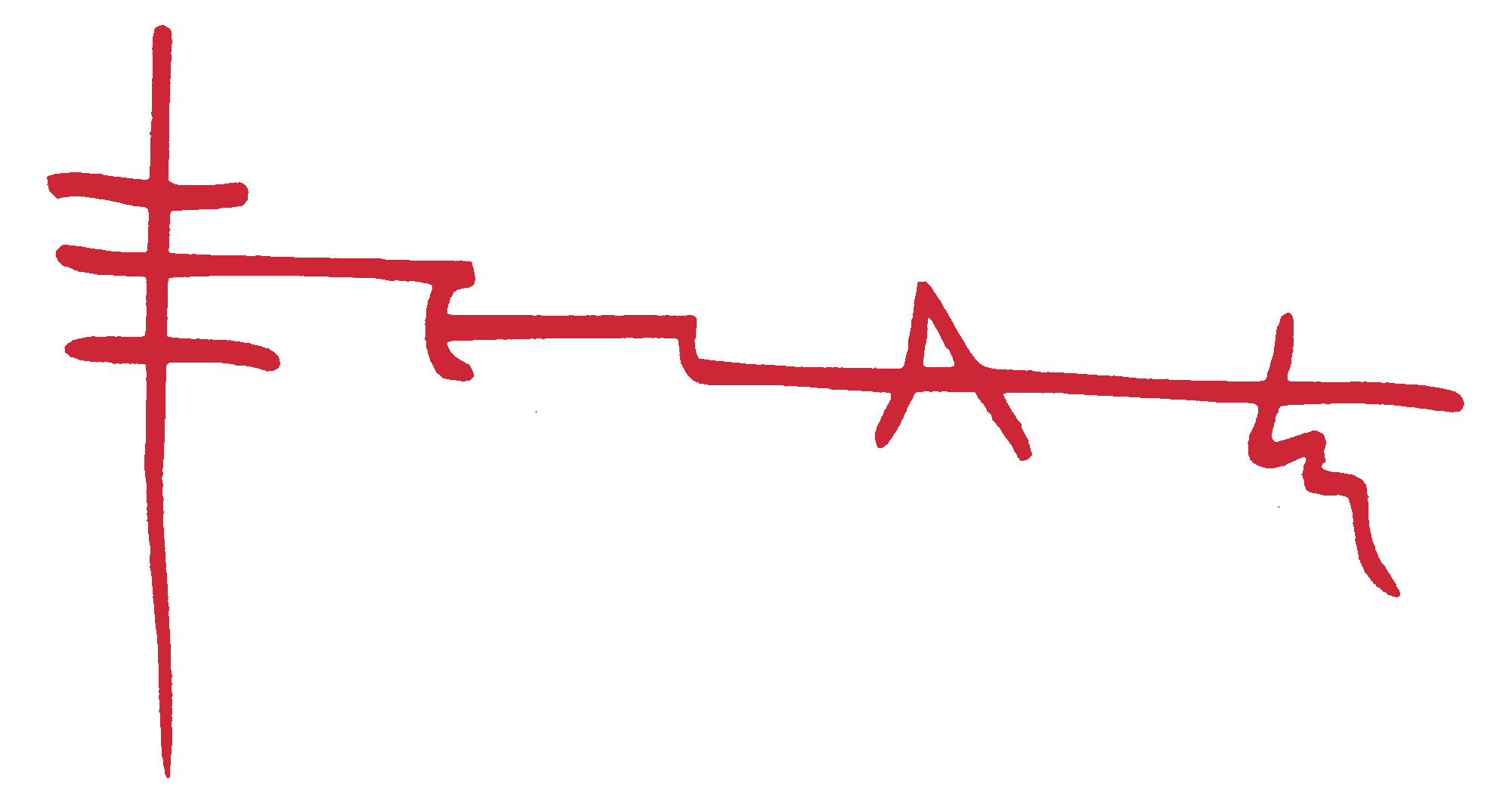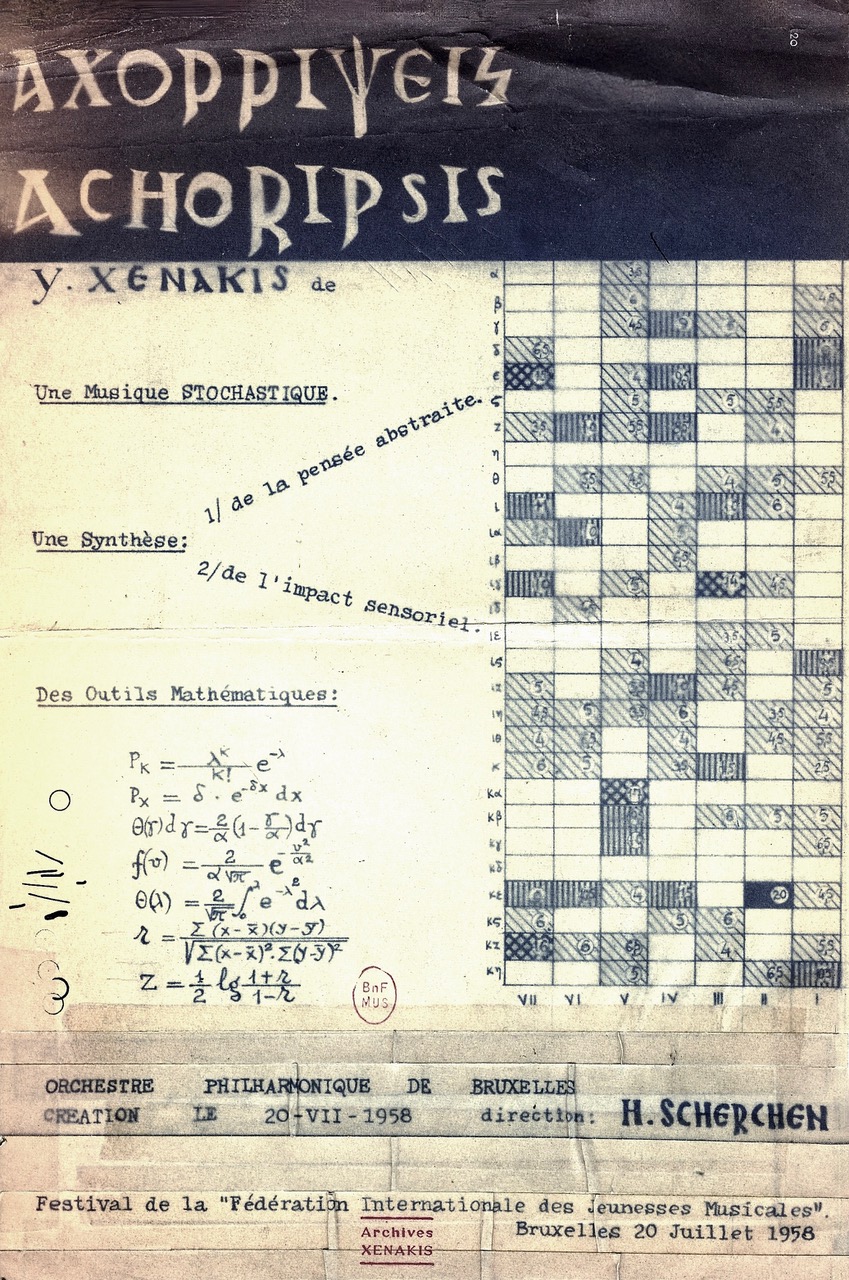Elisavet Kiourtsoglou In geometry, a surface is ruled if a straight line (skew line) passes through each one of its points. The cylinder, the cone, the helicoid, the hyperbolic paraboloid, the conoid and many other three-dimensional shapes follow the above mathematical definition. Xenakis (1958) first referred to the properties of ruled surfaces during his collaboration […]
Dictionary
Edited by Dimitris Exarchos
Picture: Couvent de la tourette façade ouest – © Famille I Xenakis Elisavet Kiourtsoglou Undulating glass panes consist in an assemblage of glass panes of various lengths; they were used for the first time for the Monastery of Sainte Marie de la Tourette (1953-1961). The project was assigned to Le Corbusier (1889-1967) by the Dominican […]
Makis Solomos translation from the French: Jennifer Higgins When Xenakis creates compositional implementations of theoretical models, he frequently “intervenes” and introduces many “discrepancies.” All Xenakis specialists, when comparing the theoretical models with the scores, have noted that there are important “gaps” between the data predicted by the former and the data found in the latter. […]
Makis Solomos translation from the French: Jennifer Higgins Possibly the most important musical revolution of the 20th and 21st centuries has been the emergence of sound, and the ever-greater importance accorded to it (see Solomos 2019). Xenakis occupies a special place in this development, whereby, to put it simply, composition of sound has tended to […]
James Harley In mathematics, a random walk is a process that describes a path that consists of a succession of random steps on some mathematical space (e.g., 2-dimensional space: amplitude-time, or pitch-time). It was first introduced by Karl Pearson in 1905. An elementary example of a random walk is on the integer number line which […]
Dimitris Exarchos A sieve is an abstract generalization of the concept of the scale. In Xenakis’s own words, a sieve is “every well-ordered set [that] can be represented as points on a line, as long as a reference point is given for the origin and a length u for the unit distance” (1992, 268). As […]
Benoît Gibson While avant-garde composers such as Boulez or Stockhausen developed their compositional methods on the basis of serial techniques, Xenakis followed criteria other than those stemming from any musical tradition. By approaching the musical phenomena globally, he opened up a new sound world that included textures comparable to natural phenomena governed by the law […]
Benoît Gibson Iannis Xenakis is a composer who is well–known (and often criticized) for his use of mathematics and abstract calculations in his works. To refer to montage when describing these works may come as a surprise to the reader. And yet, in some way, the formalization of music attempted by Xenakis encouraged the practice […]
Benoît Gibson Xenakis refers to group theory mainly in two different contexts. On the one hand, to demonstrate the ordered structure of sound characteristics—this allows him to establish a correspondence between numbers and pitch; on the other hand, to explore the symmetries proper to the structures of finite groups. Xenakis utilizes systems of group symmetries […]



